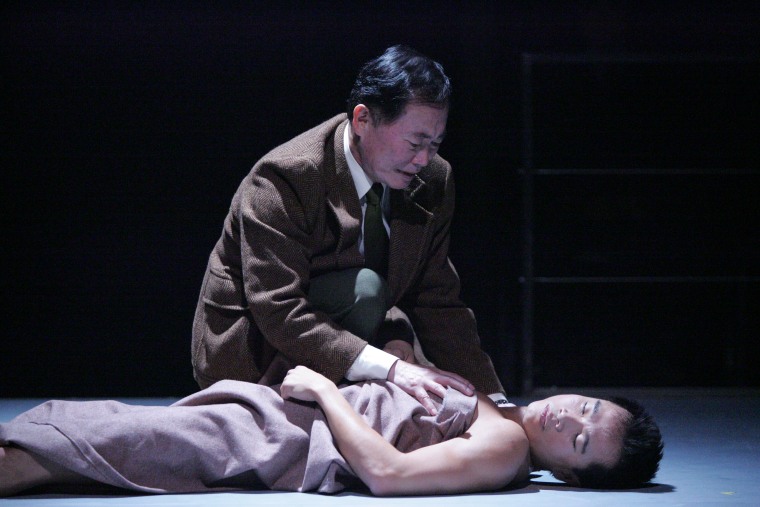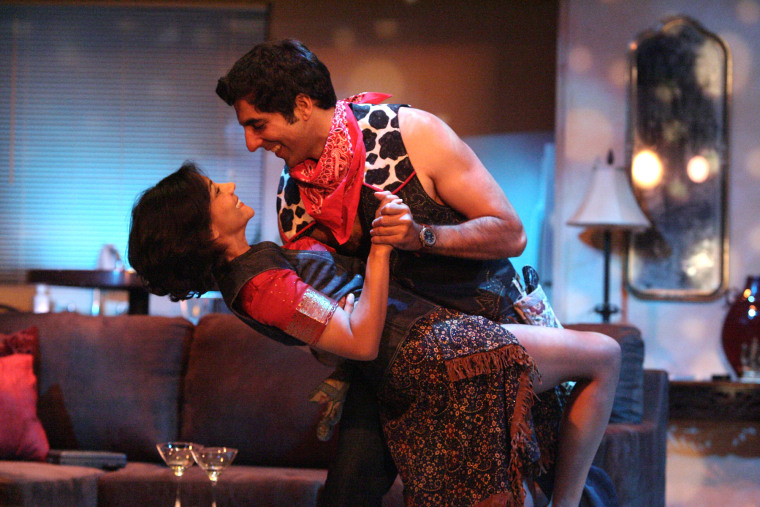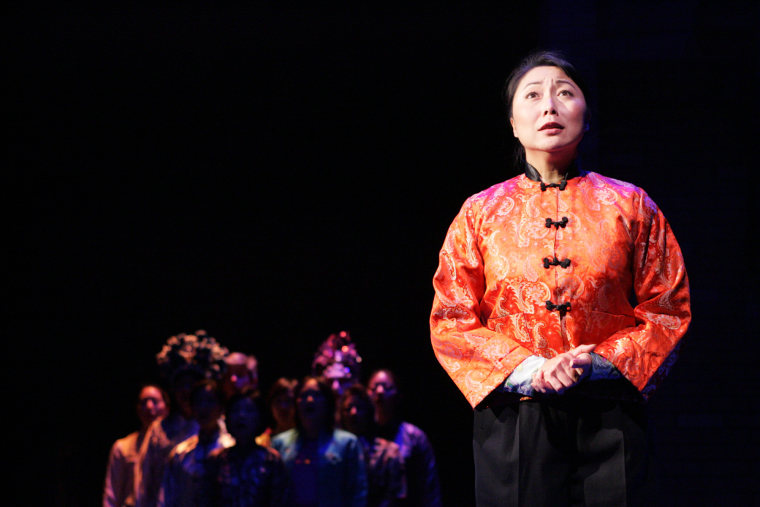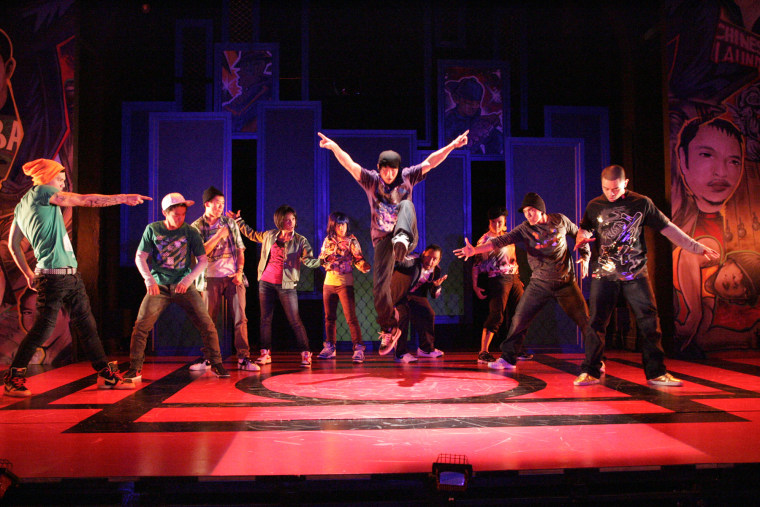When it comes to the arts, Los Angeles is better known for groundbreaking films and television than it is for theater and stage productions. But since its inception in 1965, L.A.-based theater troupe East West Players (EWP) has been a hub for Asian-American performers and writers to bring their stories to the stage as the longest-running professional theater of color in the country. Headquartered in the city's Little Tokyo, EWP now celebrates its 50th anniversary with a special extended season, including an all Asian-American production of “La Cage Aux Folles,” helmed by artistic director Tim Dang.
“We know how to work diversity, access, and inclusion,” Dang, who joined EWP in 1993 and for whom the 2016 season will be his last, told NBC News. “We have 50 years of experience doing this.”
RELATED: Emily Kuroda Opens Up About Her Career, Comedy, and the 'Gilmore Girls' Revival
Notable performers and artists who have honed their craft and launched their careers on EWP’s stage include John Cho, Daniel Dae Kim, Kal Penn, Tamlyn Tomita, Masi Oka, and Tony Award-winning playwright David Henry Hwang.
“The average Asian actor is not going to get a chance to play all the different types of parts that are available and offered to them at East West,” actress Lauren Tom, who voices Amy Wong on “Futurama” and has appeared on “Supernatural,” "Friends," and "The Joy Luck Club" told NBC News.

Tom performed with the group after moving to Los Angeles in 1990 from New York City, where she had already been working in theater.
“The average Asian actor is not going to get a chance to play all the different types of parts that are available and offered to them at East West.”
“For me, it was talented artists getting together and getting a chance to dig their teeth into something meaty and not just being relegated to really bit parts to fill some sort of quota,” Tom said.
That was also the case for half-Japanese actress Maya Erskine. In 2010, Erskine won the role of Babe in “Crimes of the Heart.” She had always wanted to do the play, but couldn’t imagine herself starring in a production set in the American South and traditionally featuring an all-white cast until EWP.
“[Director] Leslie Ishii really made a viable story for why there would be half-Asians. We [hapa actors] could draw on all of our own experiences of not really fitting in, not really knowing what race you belong to sometimes as a child,” Eskrine told NBC News. The performance led Erskine to her first agent, and she is currently featured on NBC’s medical drama “Heartbeat.”

David Henry Hwang — for whom the group’s 240-seat theatre and writer’s institute are named — recalled experiencing the power of seeing Asian performers on the EWP stage as a child, when his mother was the pianist for its production of the operetta “The Medium.”
“I had the choice of hanging around rehearsals or getting babysat at my aunt's house and chose the former,” Hwang told NBC News via email. “Though I don't actually remember much about the show, in retrospect it seems to me significant that, at an early age, I saw Asians as actors, directors, and artistic leaders. Perhaps this made it more possible to imagine myself becoming a theatre artist a decade later.”
RELATED: From Broadway to Big Bird: Behind the Scenes With Sesame Street's Alan Muraoka
With the success of productions like “Hamilton” on Broadway, there are indications that mainstream theater may be getting more diverse, just as the entire country is. According to the U.S. Census Bureau, more than half of the nation’s children will be part of an ethnic minority by as early as 2020; Asian Americans constitute the fastest-growing ethnic group.
“Though I don't actually remember much about the show, in retrospect it seems to me significant that, at an early age, I saw Asians as actors, directors, and artistic leaders. Perhaps this made it more possible to imagine myself becoming a theatre artist a decade later.”
To help organizations transition into this impending population shift, Dang authored the "2042: See Change" initiative. Modeled after an earthquake emergency plan, the proposal includes a “51% Preparedness Plan for American Theatre” that challenges theater houses to reach significant benchmarks in inclusion and diversity of staff and programs — 51 percent of artists and production personnel being people of color, women, or under age 35 by 2020 — or risk not being able to use the term “diverse” to describe its programming.
If theaters cannot meet such benchmarks soon, Dang said, they run the risk of becoming irrelevant. “Most kids in [Los Angeles] are of color. They are the future artists and performers," he said. "At theaters like the Ahmanson or the Geffen, are these students of color seeing themselves on-stage? The answer is no. What I’m telling a lot of these theaters is we need to think about that.”
It’s a battle that can feel consistently uphill. Insensitive and stereotypical jokes about Asians at this year’s Academy Awards brought to light the challenge of including Asian Americans in larger conversations about diversity, even amid the backdrop of the “#oscarssowhite” controversy that prompted significant changes to Academy membership rules. Dang likens the experience to a dinner party, where the hosts are mostly white and the guests are not.

“Inviting someone over to dinner is a very personal thing," he said. "What are you going to cook? Do you ask them about dietary restrictions? What are the cultural implications about this? It’s not just inviting people to the table or to the party, but it’s really getting to know them. So what’s happening is that they’re making policies to invite people to the table, but it has to go beyond that now.”
As EWP looks ahead, Dang anticipates that the next evolution of Asian-American theater will include more stories that speak to the multiracial and mixed-race experience.
“[We] constantly look for communities that are underserved and give them a stage, literally. It’s constantly mining that and figuring out what that means,” Snehal Desai, EWP’s associate artistic director, told NBC News.

But the more immediate challenge of gaining visibility and representation in Hollywood is still a numbers — and money — game.
“More Asian Americans need to go into the arts. No single writer can represent a community. Only a community of writers can achieve this,” Hwang said. “And those not interested in becoming artists themselves need to support Asian American stories. Watch 'Master of None' or 'Fresh Off the Boat,' and see shows at EWP. Hollywood will follow the dollars. So we can use ours to change Hollywood.”
Follow NBC Asian America on Facebook, Twitter, Instagram, and Tumblr.
